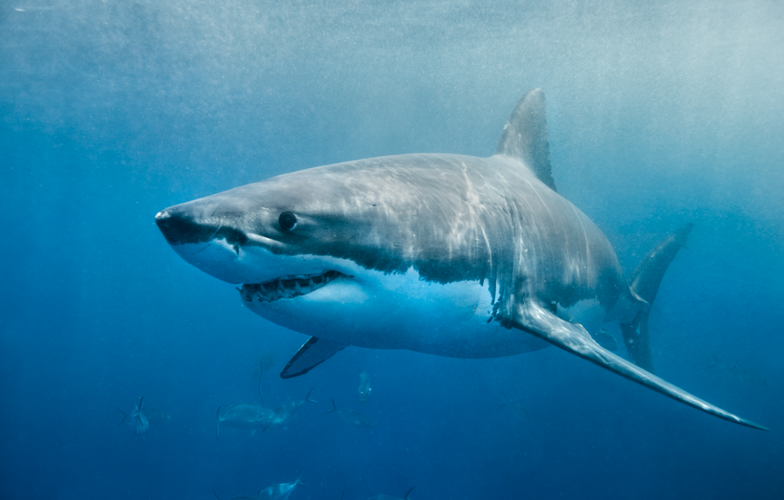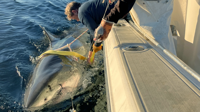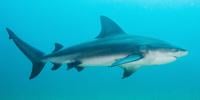DELMARVA - Friday marks the 50th anniversary of the release of the movie Jaws, a film that would go on to make countless people think twice about dipping into the ocean while on summer vacation since June 20, 1975.
With the Atlantic Ocean to our east and the Chesapeake Bay to our west, Delmarva residents are no strangers to coexisting with marine life. Sharks are a common sight for watermen and recreational boaters here. So does the fear of them still remain, and, if so, why?
For Jaws’ 50th anniversary, WBOC takes a deep dive into the most infamous sharks of Delmarva and how these fascinating animals play a pivotal role in our coastal ecosystems - and why experts are pushing for a focus on protecting them over fearing them.
Shark Attacks
Maryland holds a grim recognition when it comes to sharks but luckily not a consistent one. The very first documented death from a shark attack in North America reportedly occurred in a Chesapeake Bay tributary on Maryland’s Western Shore in 1640. Only two other unprovoked attacks have been recorded in Maryland since 1837, according to the Florida Museum of Natural History’s International Shark Attack File (ISAF).
The Florida Museum says Delaware and Virginia have each seen five unprovoked shark attacks since 1837. ISAF does not list any unprovoked fatal encounters in Delmarva waters in their records since that date, a 188 year timespan.
In 2024, the Florida Museum of Natural History reported an “exceptionally calm” year for worldwide shark attacks, with 47 confirmed unprovoked cases across the globe, down from 69 in the previous year.
“Annual fluctuations in shark-human interactions are always expected,” the ISAF 2024 Shark Attack Report reads. “While the number of fatalities in 2024 was lower than in 2023, this variation is still within the normal, recorded range of global fatalities.”
Of those 47 unprovoked worldwide attacks in 2024, four were fatal, according to the ISAF.
The ISAF defines unprovoked bites as “incidents in which a person does not initiate contact with a shark. Instances in which a person intentionally or unintentionally initiates contact, including spearfishing and releasing sharks from nets or hooks, are not included in the report.”
According to the ISAF, there are 548 known shark species on the planet, and less than 20 of those have bitten humans 10 or more times.
Delmarva’s Shark Species
Delmarva’s vast waterways and coasts are home to a variety of sharks, most of which do not make that list.
Delaware’s Department of Natural Resources and Environmental Control (DNREC) reports there are as many as 62 total species of sharks found in the nearby Atlantic waters, Delaware Bay, and Inland Bay. The most common are spiny and smooth dogfish, sand tiger, and Atlantic mako, according to Delaware officials.
“Researchers say more than a dozen species of sharks could, in fact, be swimming as close as 10 feet to you in the Atlantic at any given time,” Delaware’s DNREC website reads. “But so are fish and all kinds of other marine species because, after all, the water is their home. We’re just visitors in their sphere and they are almost always not interested in getting to know us better.”
Maryland’s Department of Natural Resources says it manages 41 species of coastal sharks in a joint effort between the state, Atlantic States Marine Fisheries Commission, National Oceanic and Atmospheric Administration, and the International Commission for the Conservation of Atlantic Tunas.
From time to time, though, Delmarva’s coastal waters also host the most famous shark of them all - the great white.
Great White Sharks
Great white sharks are rarely-reported visitors to Delmarva waters yet capture the Peninsula’s fascination each time they make an appearance. In 2015, ocean research non-profit and shark-tracker OCEARCH pinged the famous 3,456-pound female Mary Lee near the Chincoteague Bay. In 2023, a juvenile female named Anne Bonny, also pinged by OCEARCH, passed through Delmarva waters on Thanksgiving.

Mary Lee the white shark, tagged and tracked by OCEARCH
“Yes, they’re also around, but they are the least common shark species found in Delaware waters,” DNREC’s website reads regarding white sharks.
Perhaps largely due to their frequent starring in films like Jaws and documentaries, great whites draw the most attention when it comes to sharks. Experts, however, say they are still significantly misunderstood and information on their migration and mating patterns remain scarce. OCEARCH says they are actively working on changing that, for the benefit of both humans and sharks.
On January 17, 2025, OCEARCH said they tagged their largest recorded male Atlantic white shark off the coast of the Florida/Georgia border. At just under 14 ft. and nearly 1,700 pounds, the shark was dubbed Contender. Contender, like Mary Lee and Anne Bonny, could possibly be headed through Delmarva waters as researchers track him on an apparent northbound route. He was last pinged on June 7 off the coast of North Carolina.

OCEARCH tags Contender, their largest Atlantic male white shark to date
WBOC spoke with OCEARCH as to why their research, Contender, and his journey were important to Delmarva and to assuaging fears about white sharks.
“Contender is the largest male white shark that we’ve handled and tagged,” OCEARCH founder Chris Fischer told WBOC. “These big mature males are very important in solving a puzzle that’s never been solved in any of the nine white shark populations - and that is, where do they mate?”
The white sharks, according to Fischer and his organization’s research, are not lingering off Delmarva’s shores. They’re reportedly migrating to northern waters off Canada to hunt after mating in the southeast, bringing them briefly to our coast.
“We know they come through your neck of the woods when they’re migrating north off Chincoteague and Assateague,” Fischer said. “We know that these animals are passing closely this time of year.”
Fischer said this is the beginning of the peak of the shark’s migration season as they move north to hunt seals. Delmarva beaches are a seasonal stomping ground for seals.
“Managing” those seals, as Fischer puts it, doesn’t just shed light on why and when the sharks are passing through, but also why that movement is important.
More Sharks, More Food
Without sharks, OCEARCH says our own food supply could be endangered. Sharks play a vital role in controlling the food chain and preventing smaller predators, like seals, from overfeeding and depleting even smaller species.
“When OCEARCH was founded, it was really founded on trying to impact global abundance, trying to make sure kids around the world could see an ocean full of fish,” Fischer said in an interview with WBOC. “Around 2006 we saw a global crash in our large shark populations and we saw fish populations struggle in the areas where that occurred.”
Fischer said large shark populations were reduced to about 9% at the time.
The restoration of white sharks, and other large shark populations, is a focal point in OCEARCH’s mission. Fischer referred to the predators as “balance keepers.”
“The path to abundance goes directly through the balance keeper,” Fischer said, comparing great white sharks to African lions and North American wolves in their keystone ecological roles.
Efforts are underway to protect sharks here off Delmarva. In 2022, the federal government declared a ban on the harvesting of mako sharks, a restriction that directly affected Ocean City’s White Marlin Open. The famous annual fishing competition remains without a shark category as of 2025.
Fear of the Unknown
Shark attacks continue to dominate headlines every summer nationwide. At the same time, researchers, activists, and government officials continue to dispute stereotypes surrounding a group of animals millennia older than humans. Knowledge and understanding are key to our coexistence with these predators, according to experts.
“When you look at the 50th anniversary of Jaws coming up and you look at the conversation around Jaws 50 years ago, where we knew nothing and they could leverage the fear of the unknown to create a movie that just fascinated and terrified everyone,” OCEARCH’s Chris Fischer said. “To now a point we have so much data, their life has been completely demystified and we know there would never be a white shark that behaves like that. These things move 100 miles a day.”
The movie Jaws, set in New England, was based on a book published in 1974. The book itself was reportedly partly inspired by shark attacks in New Jersey in 1916. The species believed to be involved in those attacks was a bull shark, according to the Smithsonian.

A bull shark, courtesy of the National Wildlife Federation
“Facts Over Fear,” OCEARCH’s website reads.
Reducing Risk
Sharks, including great whites, are natural neighbors in the sea. As Delmarva takes to the beaches this summer, the ISAF recommends the following tips to reduce your risk of an already unlikely shark bite:
-Swim with a buddy
-Stay close to the shore
-Don’t swim at dawn or dusk
-Don’t swim around schools of fish or where people are fishing
-Avoid wearing jewelry
-Avoid excess splashing










